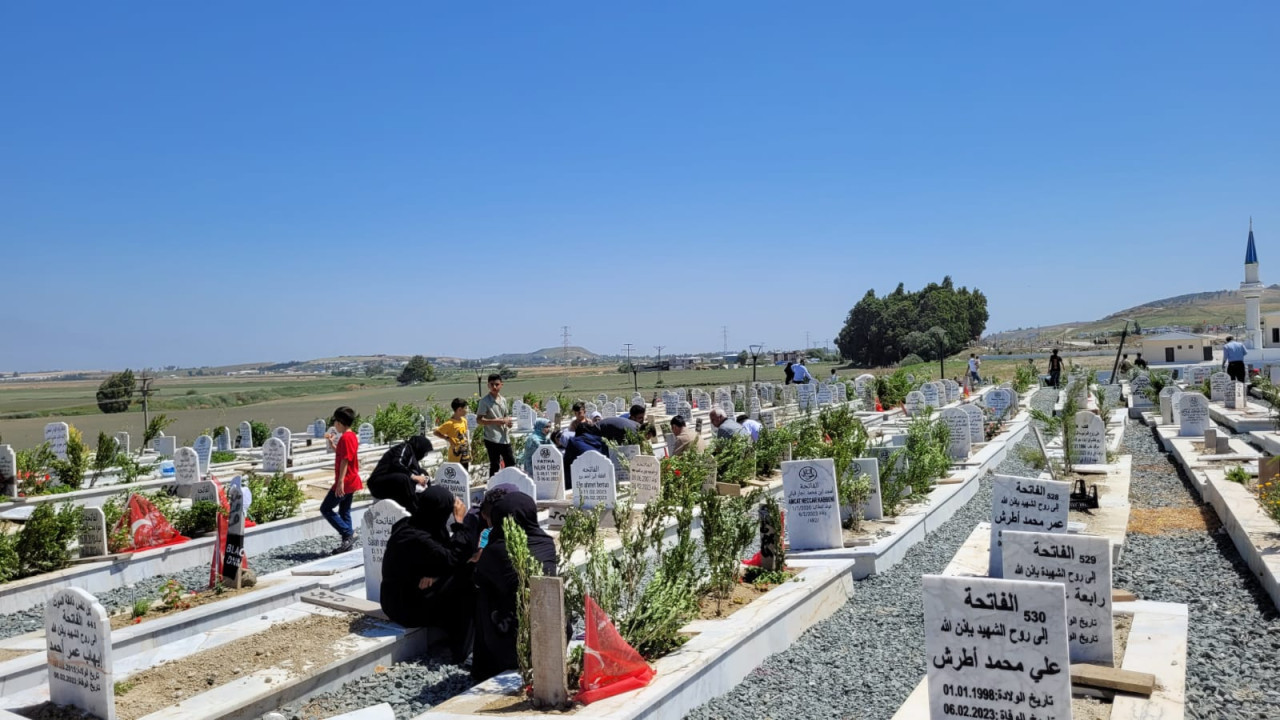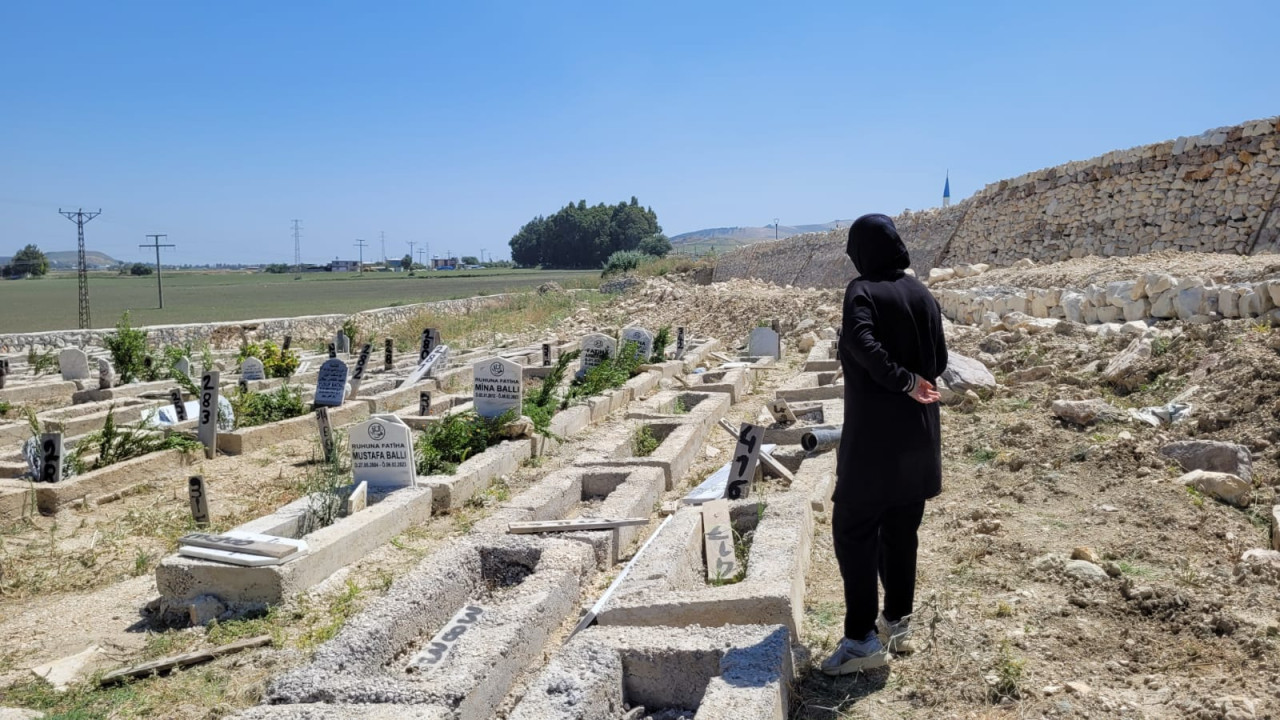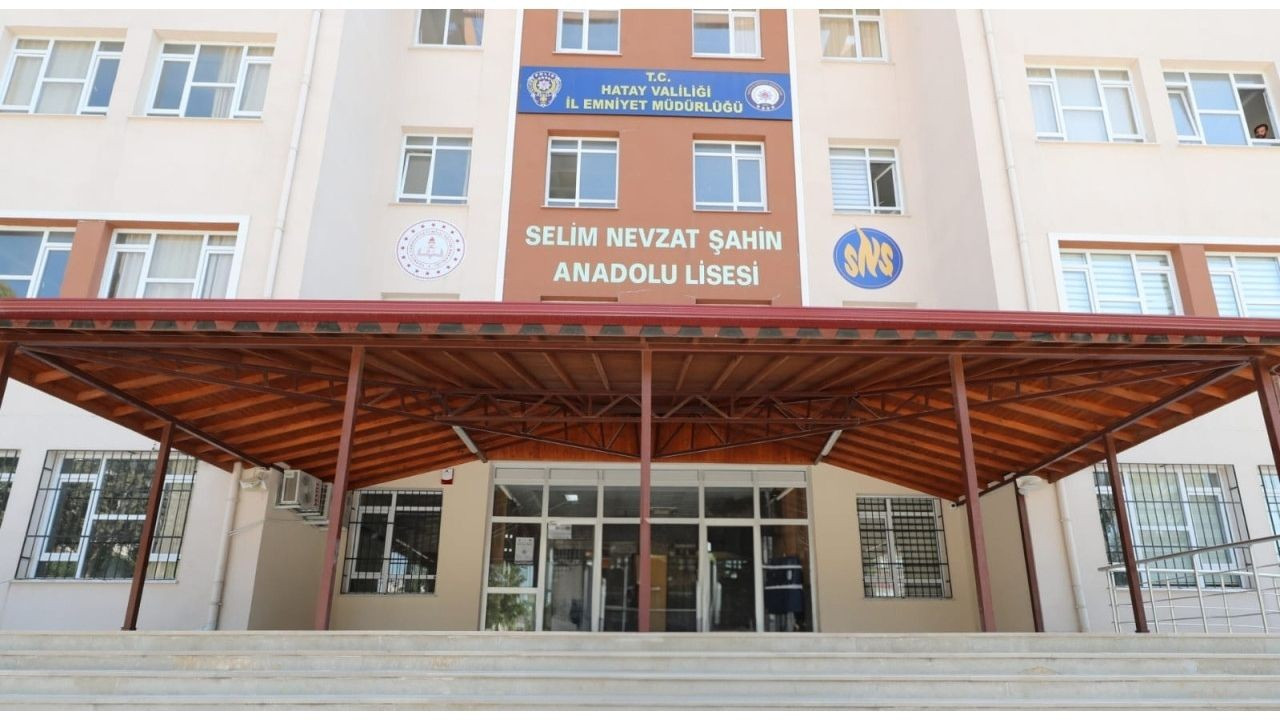Quake survivors of Hatay usher in Eid Al-Adha at cemeteries
The festive spirit of the Eid Al-Adha holiday never arrived in Hatay, as residents still face unresolved issues sixteen months after the devastating earthquakes of February 6. Visitors at the Narlıca cemetery shared their stories of grief with Gazete Duvar.
Burcu Özkaya Günaydın / Gazete Duvar
Instead of celebration, Turkey’s southern province of Hatay saw people beginning to visit cemeteries from the eve of the Eid Al-Adha holiday. The earthquake survivors amounting to millions in the city have been flocking to the earthquake victims' cemetery in Narlıca on special dates for the last 16 months.
In Hatay, plagued with numerous issues ranging from transportation and asbestos to reserve areas and missing persons, even visiting cemeteries during the holiday became a problem due to a lack of public transportation. Many earthquake survivors without vehicles had to walk about an hour in 38-degree heat to reach the cemeteries from their container towns.
Grief, anger, hopelessness, and sadness defined the holiday in Hatay. The soil at the cemetery had shifted during the winter rains. The graves, which were a subject of concern at the time, underwent repairs. However, families still encountered shifted, slid graves on the morning of the holiday.

A mourner lamenting at the grave of his brother criticized the condition of the graves, “Look at the state of these graves. They give us flowers to plant, but there’s no soil. Isn’t this a disgrace to both those lying here and those visiting?” He recalled the disputes from the previous holiday when many couldn't locate their loved ones' graves, saying, “No one knows if the person lying here is a relative or not. If we could, we would take them elsewhere.”
The earthquake cemetery seems to be divided into two distinct sections. The entrance features flag-bearing, marble tombstones, with soil and flowers. Whereas the lower section had graves that shifted with every rain, surrounded by makeshift tombstones.
A Syrian woman, speaking no Turkish, frantically searched among the shifting graves with fallen numbers. With the help of other survivors, she found her relative's grave, lamenting, “They’ve all shifted. Why wasn’t this fixed? There are flowers but no soil to plant them in.”
In Hatay, graves had become places for people to converse with their lost loved ones. İnci Senak, who lost her son, daughter-in-law, and grandchildren in the earthquake, came to pay her respects. She said, “It’s as if the earthquake happened yesterday. Nothing has changed in Hatay.”
Many visitors came from nearby provinces like Mersin and Adana. Syrian national Hama, now wheelchair-bound due to the earthquake, came from Mersin with his son. She lost three children in the disaster. “We are grateful for everything, but this immense pain never goes away,” she said.

There are all kinds of graves at the cemetery, flower-covered, lush with fragrant wild basil, and even without soil. One grave, completely covered in greenery, belonged to a 14-year-old child.
A survivor who experienced the earthquake in Narlıca said, “My mother-in-law and father-in-law survived, but my 14-year-old brother-in-law died. He was precious to our entire family. For us, there’s no holiday. This is our holiday. We walked here from the container city in this heat. How can we celebrate?”
Meanwhile, a cemetery official said the graves had shifted due to problematic ground conditions and would be relocated at the earliest convenience.
(English version by Ayşenaz Toptaş)


 Container cities in Turkey’s quake-struck Hatay flood amid downpours, absent infrastructureDomestic
Container cities in Turkey’s quake-struck Hatay flood amid downpours, absent infrastructureDomestic Police department takeover of Hatay high school disrupts education since Feb. 6 quakesDomestic
Police department takeover of Hatay high school disrupts education since Feb. 6 quakesDomestic Association emphasizes neglect in Hatay container town as Syrian child drowns in wellHuman Rights
Association emphasizes neglect in Hatay container town as Syrian child drowns in wellHuman Rights